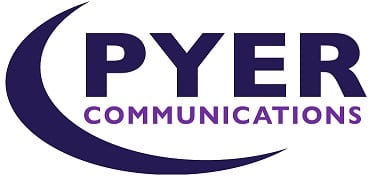Following up on the top 10 mistakes when data cabling – When talking about data cable, specifically Cat5e, Cat6, and Cat6a, it’s obvious that they have quite a bit in common. Each of these cables uses 4 pairs of twisted wired, inside a shared jacket. All three utilize RJ-45 jacks and plugs. Each type also has a distance limitation of 100 meters, which includes the length of any patch cables on the ends of the link.
In fact, you can interchange parts among the three cable types; for instance, using a Cat5e patch cable with Cat6 house cabling. However, much like a chain is only as strong as its weakest link, a mixed system can only perform at well as the level of its lowest link (in this example, the Cat5e patch cable).
So – what’s the difference?
The only real difference is in transmission performance. Each cable upgrade carries a reduction in signal loss and cross talk as well as corresponding increase in bandwidth. Obviously, each upgrade is also correspondingly more expensive. So the question becomes, how much are you gaining for the increased price? Instead of talking about SNR ratios or near-end-cross-talk requirements, let’s look at what the various cables offer as far as their Ethernet performance.
Cat5e: 1 Gigabit Ethernet to 100 meters 10 Gigabit Ethernet to 45 meters
Cat6: 1 Gigabit Ethernet to 100 meters 10 Gigabit Ethernet to 55 meters
Cat6a: 1 Gigabit Ethernet to 100 meters 10 Gigabit Ethernet to 100 meters
Each of the three standards support transmission of one Gigabit, and this is sufficient for the majority of network operations. When 10 Gigabit is used, it’s not typically used for workstations, but instead for aggregation links between switches. While it’s doubtful that many operations will need 10G data transmission to their workstations, it’s not unreasonable to design your system with the idea of maximizing it for future needs. When you look at it this way, you can see the limitations of Cat5e and Cat6.
Data closets are placed with the assumption that they can be as much as 100 meters from the workstation; that means with 10 Gigabit Ethernet, only Cat6a will be adequate, and as such is the best choice to “future-proof” your operation
Want to know more about data cabling your business?
Contact Pyer Communications about all your Melbourne data cabling needs.
